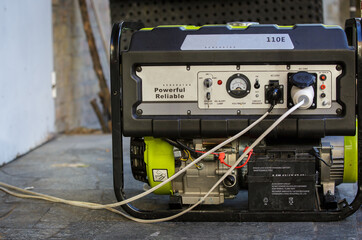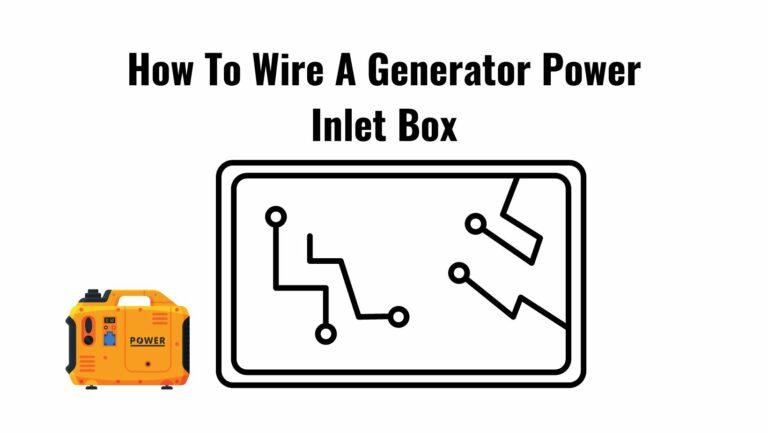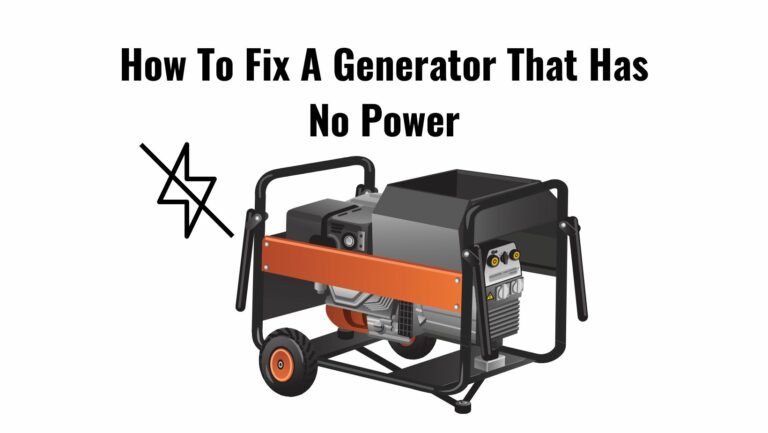
The loss of power can be a frustrating and disruptive experience, especially in today’s world, where electricity is essential to most aspects of our daily lives.

Generators provide a temporary solution to power outages by providing electricity to your home or business. It is essential to know when power has been restored to safely switch back to the main power supply and avoid potential hazards.
This article will discuss the different ways to determine when power is back after using a generator. It will provide valuable information on how to know power is back and ensure a smooth and safe transition.
3 Ways To Know Power Is Back When Using a Generator
If you’re using a generator to power your home or business during a power outage, it’s important to know when the electricity has been restored so you can switch back to the grid and save fuel and money.
Here are three ways to determine when the power is back:
1. Indicator Light
One simple way to know when the power is back is by using an indicator light. The bulb should be connected only to the power and will come on every time the power is restored.
This is an easy and straightforward solution that can give you peace of mind knowing you won’t miss the moment the electricity returns.
Using an indicator light has several advantages, including its simplicity and ease of use. Additionally, it is cost-effective and doesn’t require special tools or knowledge.
2. Voltage Detector
Another option is to purchase a no-contact voltage detector. These can range from simple and inexpensive models to more advanced ones built into multimeters.
To use this method, simply hold the detector over the main breaker, which should light up when the power is restored.
Note that some electrical conduits may shield the cables and prevent detection, so it’s important to test this method before you need it to ensure it works.
There are two main types of voltage detectors: simple and inexpensive models and more advanced models built into multimeters.
Simple voltage detectors are typically small, handheld devices that are easy to use. At the same time, more advanced models may offer additional features and functions, such as measuring the voltage or current in a circuit.
3. Checking Your Neighbors’ Lights
If neighbors are connected to the same transformer, you can use their lights to indicate when the power is back. For example, if you have five houses connected to the same transformer, it’s easy to see when the lights come back on and know that the power has been restored.
With underground lines, it may be harder to determine which houses share your transformer, but checking your neighbors’ lights can still give you an idea of when the power is back.
How long should a generator run before turning it off?
For small portable generators, it is recommended to run the generator for no more than 12 hours at a time, with a break of at least 2 hours in between. This allows for proper cooling and refueling.
Running them for at least 30 minutes every two weeks is recommended for larger standby generators to keep the engine and components in good working order.
Some manufacturers may specify a different schedule, so it’s important to consult the manufacturer’s recommendations.
Regardless of the size of the generator, you must follow the manufacturer’s instructions and guidelines to ensure the generator is used safely and efficiently.
When refueling, you should also let the generator cool down before adding fuel to avoid the risk of fire or explosion.
How do I make my generator not back-feed electricity?
To prevent back feeding electricity from a generator, you should use a transfer switch. A transfer switch is a device that connects the generator to the electrical panel and disconnects the utility power during a power outage. This prevents electricity from being sent back to the utility grid, which can be dangerous for utility workers and potentially damage your generator.
Here’s how to install a transfer switch:
- Turn off the main power: Before installing a transfer switch, you should turn off the main power supply to your home.
- Install the transfer switch: Connect the transfer switch to your electrical panel and the generator. Follow the manufacturer’s instructions for installation.
- Connect appliances: Once the transfer switch is installed, you can connect appliances to it using heavy-duty extension cords.
- Start the generator: Turn it on and ensure it is working properly. Then, turn on the transfer switch to allow electricity to flow to the connected appliances.
FAQs
How often should I run my generator to keep it in good condition?
It is recommended to run small portable generators for no more than 12 hours at a time, with a break of at least 2 hours in between, to allow for proper cooling and refueling. For larger standby generators, running them for at least 30 minutes every two weeks is recommended to keep the engine and components in good working order.
Can I run my generator overnight?
Yes, you can run your generator overnight, but it is recommended to limit the running time to no more than 12 hours at a time, with a break of at least 2 hours in between. This allows for proper cooling and refueling.
How do I know if my generator is working properly?
You can perform a load test to determine if your generator is working properly. A load test involves running the generator with a load connected to it, such as a few light bulbs or a small air conditioner, to see if it produces enough power and runs smoothly. You can also check the voltage and frequency output of the generator with a multimeter.
Can I use an extension cord with my generator?
Yes, you can use an extension cord with your generator, but it is important to use a heavy-duty cord that is rated for outdoor use and has the correct amperage capacity for your equipment.
How do I maintain my generator?
Regular maintenance is important to keep your generator in good working order. This includes checking the oil level and changing it as needed, cleaning the air filter, checking the spark plug, and checking the fuel system for leaks.
Conclusion
When using a generator, you must know when power is restored to your home. You can use an indicator light or a voltage detector or check your neighbors’ lights to determine when power is back.
You should also follow proper generator usage and maintenance guidelines, such as limiting running time, performing regular maintenance, and using a transfer switch to prevent back-feeding electricity.
Following these steps ensures your generator operates safely and effectively during a power outage.






